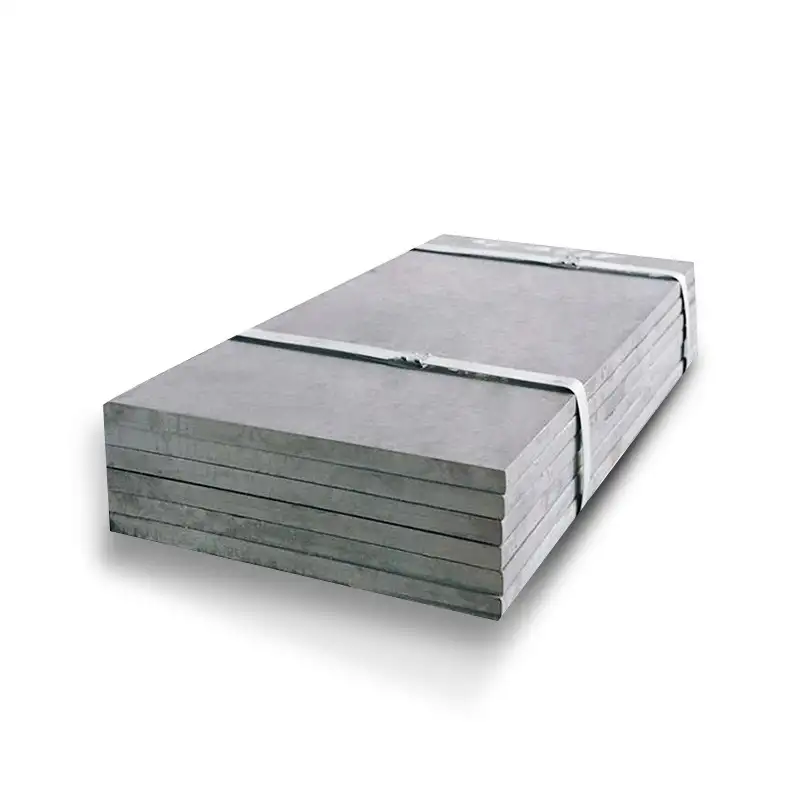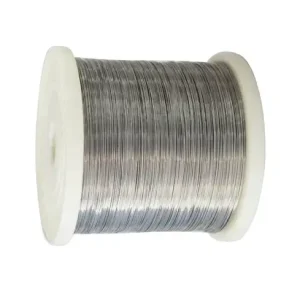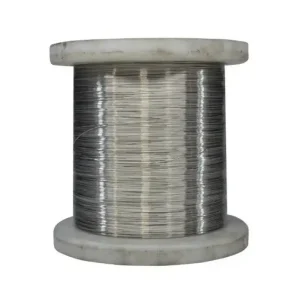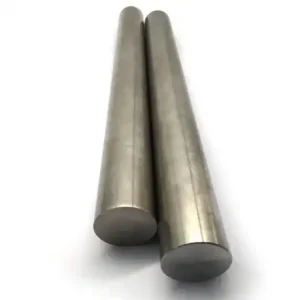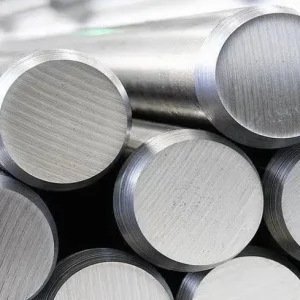ASTM A515 / ASME SA-515 Grades 60, 65 and 70 are killed carbon-silicon pressure-vessel steels engineered for intermediate- and higher-temperature welded boilers, heat exchangers and pressure vessels. Grade choice depends on required minimum tensile/yield strength and toughness at service temperature; Grade 70 provides the highest strength among the three while Grades 60 and 65 balance strength and weldability for thicker or higher-temperature sections. For global purchasers seeking factory pricing and fast delivery, MWAlloys supplies competitively priced A515 plates from China with mill test certificates, 100% factory (ex-works) pricing and ready stock for common sizes, plus rapid cutting and shipping options for stocked inventory.
Standard overview and intended applications
ASTM A515 / ASME SA-515 is the recognized specification for carbon-silicon steel plates intended primarily for intermediate- and higher-temperature service in welded boilers and other pressure vessels. The specification covers three strength grades — 60, 65 and 70 — each defined by minimum tensile or yield requirements and test acceptance criteria. Plates are produced as killed steel and typically supplied as-rolled or normalized to offer predictable high-temperature performance and consistent microstructure. These plates are widely used in oil & gas pressure vessels, industrial boilers, petrochemical reactors, steam drums, and heat-exchangers where elevated temperature strength and weldability are important.
Grades explained: what 60 / 65 / 70 mean in practice
-
Grade 60 — the entry-level grade in the family. It provides adequate strength for many moderate-temperature boilers and vessels and is often selected when thicker sections are needed without excessive strength that can complicate fabrication. Grade 60 is commonly specified as “as-rolled” for many projects.
-
Grade 65 — intermediate strength, used when slightly higher design stresses or thinner sections are required while still retaining good weldability and toughness.
-
Grade 70 — highest minimum strength in the A515 family. Often specified for pressure vessels and boilers that operate at higher stresses or where design codes call for the stronger plate to reduce section thickness. Grade 70 is frequently supplied normalized to improve toughness and provide tighter property control across thicknesses.
Engineers select the grade based on design allowable stresses, thickness limitations, expected operating temperature, weld procedure qualifications and impact/toughness requirements. When Charpy/V-notch toughness at low temperature is a concern, normalized (N) or normalized + tempered (N+T) conditions and additional qualifying tests are typically required.
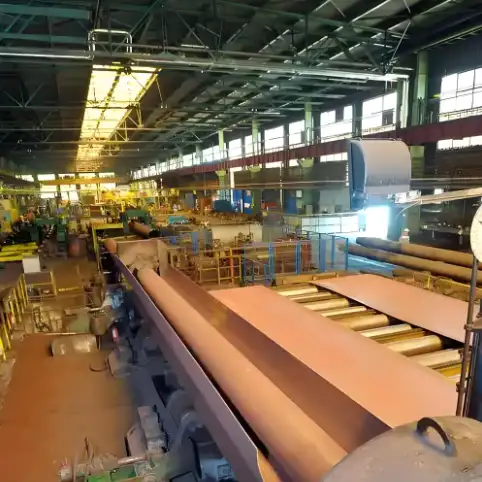
Chemical composition
Below is a practical composition summary used by mills and buyers. Note: project specifications may require product vs ladle analysis and maximum values; always reference the mill MTC for the shipped plate.
| Element | Typical A515 Grade 60 / 65 / 70 limits (wt. %) — representative |
|---|---|
| Carbon (C) | Grade 60: ≤ 0.30 — Grade 65: ≤ 0.30 — Grade 70: ≤ 0.35 (max varies by supplier & thickness) |
| Manganese (Mn) | 0.60 – 1.30 (common cap ~1.30%) |
| Silicon (Si) | 0.15 – 0.45 (deoxidation control) |
| Phosphorus (P) | ≤ 0.035 (max) |
| Sulfur (S) | ≤ 0.035 (max) |
| Copper (Cu) | Often ≤ 0.30 (trace, depends on source) |
| Nickel / Chromium / Molybdenum | Typically ≤ 0.30 each (not intentionally alloyed; listed as limits where present) |
Notes:
-
The table above is a representative summary compiled from typical mill data sheets and supplier product pages. Project specifications may impose tighter limits or additional elements (e.g., Nb, V, Ti) for creep resistance or microalloying; verify with the mill test certificate (MTC) for each heat.
Mechanical and physical properties
Representative mechanical properties for A515 grades (as-rolled or normalized conditions) — use these as guidance; final acceptance is per the purchase specification and mill tests.
| Property | Grade 60 (typical) | Grade 65 (typical) | Grade 70 (typical) |
|---|---|---|---|
| Minimum Yield Strength (MPa) | ~220–260 MPa (depends on thickness & condition) | ||
| Minimum Tensile Strength (MPa) | 415–550 MPa (varies by grade and thickness) | ||
| Elongation (in 2 in or 50 mm) | 20–24% typical (thickness dependent) | ||
| Hardness (HB) | Typically < 200 HB (varies with grade/treatment) | ||
| Density | 7.85 g/cm³ (approx.) | ||
| Modulus of Elasticity | ~200 GPa |
Important: Actual guaranteed values for design must come from the mill-supplied test certificate and the specific A515/SA-515 clause applicable to the ordered thickness and heat treatment. For critical designs include Charpy V-notch testing at the design operating / lowest service temperature when required by code.
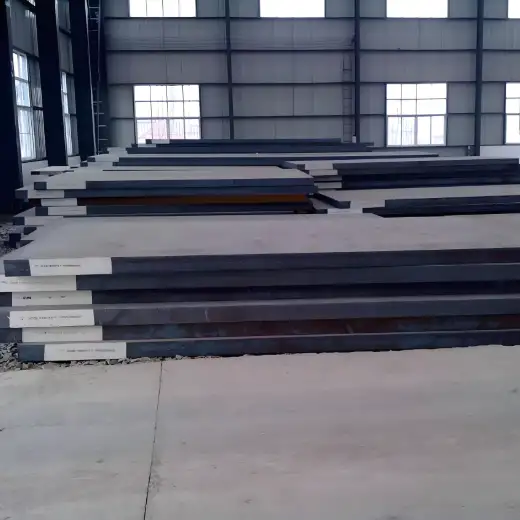
Specification, manufacturing and testing requirements
Key specification points that engineers and procurement teams must consider:
-
Manufacturing condition: Plates may be supplied as-rolled or normalized. Normalizing is often requested for Grade 70 or for thicker sections where toughness must be improved.
-
Grain size / killed steel: A515 requires steel to be killed and produced to coarse austenitic grain size practices typically used for pressure vessel steels.
-
Mechanical testing: Tensile tests are required, plus optional Charpy impact tests when specified by purchaser or code. Minimum tensile/yields vary by grade and thickness; confirmation comes from the standard and mill MTC.
-
Chemical analysis: Product and ladle analysis limits are specified — many mills will report both. Ensure acceptance criteria for C, Mn, P, S and Si are confirmed in the PO.
-
Surface condition and tolerances: Mill tolerances for thickness, flatness and edge condition should be specified. Common surface finishes: mill surface (as-rolled), shot-blasted, or machine-finished for tight tolerances.
Suggested inspection plan for buyers: review MTC (EN 10204 3.1/3.2 where required), witness tensile test or receive certified tensile/chemistry results, request Charpy reports if site conditions require, visual inspection, dimensional check and NDT (UT or RT) if code requires. MWAlloys can coordinate third-party QA / inspection at the mill on request.
Welding, fabrication and heat-treatment guidance
Welding and fabrication of A515 plates follow standard carbon-steel practice but attention is required because of carbon content and thickness:
-
Preheat and interpass control: For thicker plates (typical > 25–40 mm depending on C-eq), preheat and interpass temperature control are necessary to avoid hydrogen cracking and to control HAZ toughness. Use carbon equivalent (Ceq) calculations (e.g., IIW or other formulas) to determine preheat.
-
Welding consumables: Use low-hydrogen electrodes / filler metals matched for strength level; select filler to provide adequate toughness at the expected service temperature.
-
Post-weld heat treatment (PWHT): PWHT is sometimes specified for high-temperature service or when required by the design code; follow code and filler manufacturer guidance. Normalizing the plate before fabrication is a separate option to improve toughness.
-
Forming: Cold forming is possible within limits; heat input and springback must be considered. For tight radii or heavy gauge sections, consider thermal forming or rolling.
-
Testing welds: Perform appropriate NDT (RT/UT/MPI) per design code; perform PWHT when required and re-inspect accordingly.
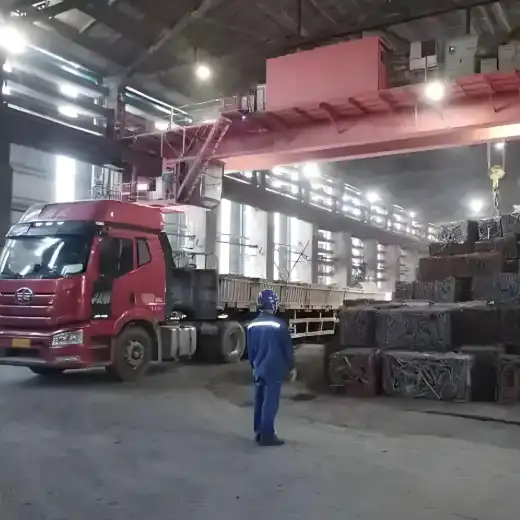
International equivalents
Engineers working on international projects often need cross-references. Below is a practical equivalence table used for procurement cross-checks — always verify with the code and mill documentation before substitution.
| Region / Standard | Typical Equivalent to ASTM A515 Grade 70 (practical cross-reference) |
|---|---|
| ASME | SA-515 Grade 70 (same family). |
| Europe / EN | EN 10028 series P265GH / P355GH are commonly used as pressure-vessel plate equivalents — check detailed chemistry and toughness requirements. |
| British / BS | BS1501 / other national grades historically used — cross refs vary by thickness/heat treatment. |
| ISO / DIN | DIN numbers depend on equivalent properties; convert via supplier cross reference. |
Note on equivalents: There is no automatic one-to-one mapping that covers every thickness and heat treatment — while EN P265/P355 family or other regional pressure-vessel grades may be treated as equivalents in practice, contract documents must list the specific standard/version and acceptance testing required.
2025 market price snapshot (USA / Europe / China)
Caveat: Steel prices fluctuate daily and are influenced by feedstock costs, mill capacity, logistics and regional demand. The ranges below are market snapshots for 2025 and are provided as purchasing guidance; request firm mill or trader quotations for binding prices and include freight, duties and processing in your landed-cost calculations.
| Region | Typical 2025 plate price range (indicative, USD per metric tonne) | |
|---|---|---|
| USA | $900 – $1,200 / tonne (hot-rolled plate spot and mill base ranges; contract sizes and plate grade/processing will shift price). | |
| Europe | €600 – €950 / tonne (~USD $660 – $1,050 / t depending on conversion & region). European domestic plate assessments varied; end-user prices are regionally volatile. | |
| China (export / domestic) | $500 – $850 / tonne typical export price bands for standard hot-rolled plate in 2025 (export offers vary by mill, size and finishing). Domestic bulk contract prices can differ. |
How to interpret:
These are ballpark market ranges for commodity pressure-vessel plate (not including specialty processing such as normalizing, tight thickness tolerances, or full NDT packages). For coated/finished, certified or cut-to-size quantities, add processing charges. For small orders, minimum-order surcharges and freight will materially affect landed cost.
If you want a more precise, up-to-date quote for a given plate size/grade/finish, MWAlloys can pull live mill offers and provide CIF/FOB pricing including exact thickness, width and heat treatment options.
Quality assurance, certification and recommended purchase clauses
For critical pressure vessel steels, include the following clauses in the purchase order and supplier qualification:
-
Standards & revision — specify “ASTM A515 / ASME SA-515 [insert year or latest revision]” and required grade (60, 65 or 70).
-
Mill Test Certificate (MTC) — require EN 10204 3.1 (independent inspector) or 3.2 where applicable; include traceability to heat number.
-
Heat treatment condition — list “as-rolled / normalized / normalized + tempered” as required.
-
Impact testing — specify Charpy V-notch energy and test temperature if toughness is relevant to service conditions.
-
NDT & acceptance — define UT/RT, MPI, and acceptance levels if required by the code or the end client.
-
Dimensional & surface tolerances — include maximum permitted deviations, flatness, edge condition and permitted mill scale or surface defects.
-
Warranties & liability — limit claims window and require notification process for quality claims.
MWAlloys can provide standard PO templates tailored for pressure-vessel steel purchases to reduce risk and speed procurement.
MWAlloys — product offering, factory advantages and logistics
MWAlloys supplies ASTM A515 / ASME SA-515 plate from China mills with the following buyer advantages:
-
Factory pricing: We offer 100% factory ex-works pricing (no distributor markup) for standard sizes and common grades (60/65/70). This provides significant unit cost advantage for large orders.
-
Inventory & lead times: MWAlloys maintains inventory of common plate sizes and thicknesses; for stocked items we provide fast turnaround (cutting, MTC, packing and export paperwork) often within days. For made-to-order normalized plates, lead times depend on mill schedule but MWAlloys coordinates priority production where project timing requires it.
-
Quality & documentation: Mill test certificates, chemical & mechanical reports, and NDT reports supplied; third-party inspection at mill available on request.
-
Value-added services: Cut-to-size, beveling, shot blasting, protective coatings and packaging for ocean transport.
-
Global shipping: Experience exporting to USA, EU and Middle East with correct HS codes and packing for seaworthy transit.
If you provide a target thickness/plate size and quantity, MWAlloys will source live mill offers (FOB/CIF) with full line-item pricing and inspection options.
FAQs
1. What is the main difference between A515 and A516 pressure-vessel plates?
A515 is intended for intermediate- and higher-temperature service and tends to have slightly higher carbon limits than A516, which is more commonly specified for low-temperature service where toughness is critical. For many applications they are similar, but code selection should reflect operating temperature and toughness requirements.
2. Is Grade 70 always better than Grade 60?
“Better” depends on design needs. Grade 70 provides higher minimum strength, allowing thinner sections; however higher carbon/strength can make fabrication and HAZ toughness control more demanding. Select grade per code, thickness and fabrication plan.
3. Should I request normalized plates for Grade 70?
Normalization is commonly requested for Grade 70 to improve toughness across thicknesses. For critical low-temperature service or where Charpy energy is specified, normalized condition gives more consistent toughness.
4. Do A515 plates require Charpy testing?
Charpy testing is not always mandatory in the base standard; however project codes or purchaser requirements often mandate Charpy V-notch tests at specified temperatures. Include this in the PO if needed.
5. Can I weld A515 with common carbon steel electrodes?
Yes, but choose low-hydrogen electrodes/fillers and control preheat/interpass on thicker plates. Match filler to required mechanical properties and toughness.
6. What is the recommended Ceq formula for preheat decisions?
Use a recognized carbon-equivalent equation (e.g., IIW or CEIIW) and the company’s welding procedure qualification to determine preheat/interpass temperatures; Ceq thresholds vary by shop practice.
7. How do I verify the plate I receive is compliant?
Require an EN 10204 MTC (3.1 or 3.2), inspect the MTC against the PO, verify heat numbers, tensile and chemistry results and perform dimensional/surface checks on delivery. For critical items, witness testing.
8. Can I substitute EN or BS grades for A515?
Possible, but only after confirming detailed chemistry, toughness and mechanical requirements match the design code; substitution must be contractually accepted by the end client and engineer.
9. What typical lead time should I expect?
Stocked sizes can ship quickly (days to a few weeks). Specialized normalized orders or non-standard sizes depend on mill capacity — typically several weeks; MWAlloys offers expedited options for stocked lines.
10. How do global prices compare in 2025?
In 2025, US plate prices generally traded higher than Chinese export offers — Europe sat between the two depending on regional demand; see the market snapshot in this brief. Always request firm mill quotes for project budgets.

